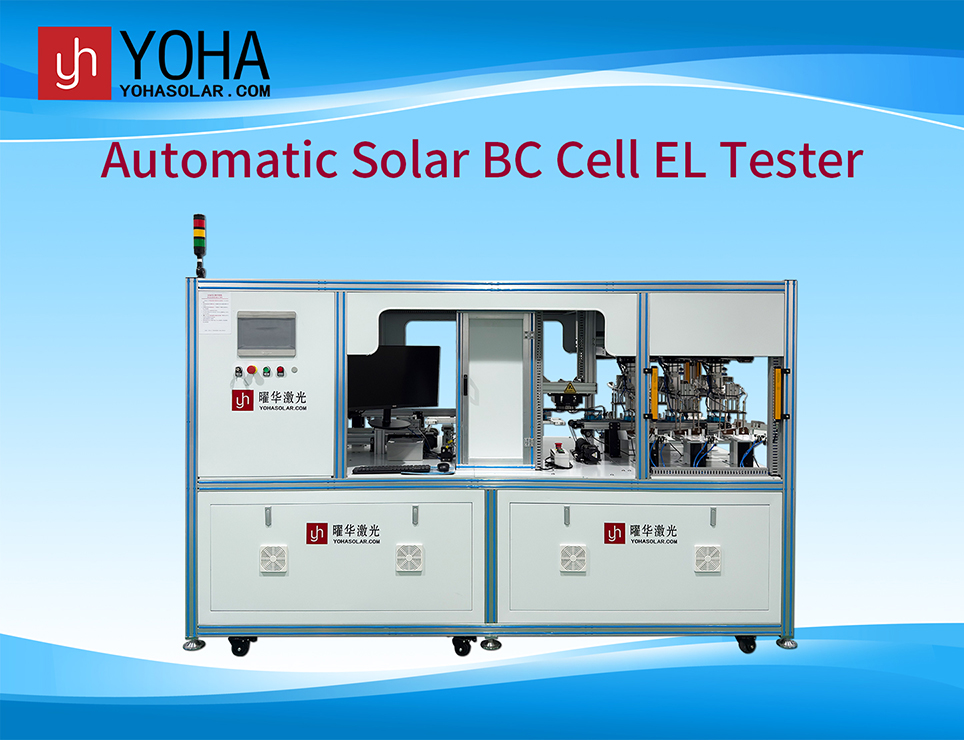Welcome to Wuhan Yoha Solar Technology Co., Ltd!
common problem
Site Map
Language:
 Chinese
Chinese
 English
English
Welcome to Wuhan Yoha Solar Technology Co., Ltd!
common problem
Site Map
Language:
 Chinese
Chinese
 English
English
In the context of the rapid development of the photovoltaic industry, the quality and performance of PV modules directly impact the power generation efficiency, operational lifespan, and return on investment of entire power plants. As the "quality inspector" for PV modules before they leave the factory and during power plant construction acceptance, the importance of PV module testers is self-evident. So, what are the standards for PV module testers? Why are they so crucial? This article will provide an in-depth analysis of this core issue, helping you fully understand the criteria and significance behind standardized testing.
First, we need to clarify: what are the standards for PV module testers? They are not a single document but a series of normative documents at the international, national, and industry levels that specify clear requirements for the performance of testing instruments, testing methods, testing environments, and data accuracy. These standards ensure that, regardless of location or brand of tester used, the measurement results of key performance parameters (such as maximum power, efficiency, open-circuit voltage, etc.) for the same PV module are comparable, accurate, and reliable.
In simple terms, the standards for PV module testers are the "benchmark" for determining whether the tester itself is qualified and whether its test results are trustworthy. Without a unified benchmark, the market would fall into chaos, and module quality would be impossible to guarantee.

Globally, the most authoritative and widely recognized standards primarily come from the International Electrotechnical Commission (IEC). These standards form the backbone of the PV module tester standards system.
IEC 61215 Series: Crystalline Silicon Terrestrial PV Modules
This is the core design qualification and type approval standard for crystalline silicon modules. While it primarily specifies the testing sequence and requirements for modules, each performance test (such as maximum power measurement, temperature coefficient measurement, etc.) relies on testers that comply with specific standards. For example, when measuring a module's maximum power under Standard Test Conditions (STC), the tester must meet the stringent requirements of IEC 60904-1 for simulator spectrum, irradiance uniformity, and stability.
IEC 61646: Thin-Film Terrestrial PV Modules
This standard is similar to IEC 61215 but is specifically tailored to the characteristics of thin-film PV modules (such as CdTe, CIGS, etc.). It imposes corresponding requirements on the tester's capabilities in measuring low-light performance and spectral response, among other aspects.
IEC 60904 Series: Photovoltaic Devices
This is the core series directly related to PV module tester standards, detailing the technical specifications of the testers themselves.
IEC 60904-1: Photovoltaic current-voltage characteristics measurement - Specifies the basic method for measuring I-V curves and clearly defines the classes of solar simulators (Class A, B, C, primarily based on spectral match, irradiance non-uniformity, and temporal instability). A high-quality tester is typically equipped with a Class A solar simulator.
IEC 60904-3: Measurement principles for terrestrial photovoltaic solar devices' spectral response - Ensures that the light source spectrum used by the tester closely matches the standard solar spectrum (AM1.5G).
IEC 60904-9: Solar simulator performance requirements - Provides more detailed regulations on the performance parameters and calibration methods of simulators.
IEC 61853 Series: PV Module Performance Testing and Energy Rating
This standard requires testing module performance under different irradiance levels and temperatures, placing higher demands on the temperature control accuracy of the environmental chamber (e.g., a steady-state solar simulator with a temperature-controlled platform) and the automation level of the testing procedures.
Understanding the above standards system allows us to examine the key performance aspects a qualified tester should possess within this framework:
Solar Simulator Class: As mentioned, a Class A simulator provides illumination conditions closest to real sunlight, which is the primary guarantee for obtaining accurate I-V curves. This is one of the core indicators in PV module tester standards.
Test Data Accuracy and Repeatability: Standards require that the tester must have extremely high accuracy (typically better than ±1%) and repeatability (better than ±0.5%) for key parameters such as maximum power (Pmax), open-circuit voltage (Voc), and short-circuit current (Isc). This is directly related to power binning and warranty commitments.
Multi-Factor Environmental Simulation Capability: Modern standards increasingly focus on module performance under real-world conditions. Advanced testers need to simulate performance under different temperatures (e.g., via an environmental chamber covering -40°C to +85°C) and different irradiance levels (from 1000 W/m² down to 200 W/m² or even lower) to create a complete performance matrix.
Spectral Match: The spectrum of the tester's light source must closely match the AM1.5G standard solar spectrum to avoid measurement inaccuracies for specific technologies (like thin-film, HJT) due to spectral deviation.
Flash Pulse Duration and Stability: For testers using pulsed simulators, the flash pulse must be sufficiently long and stable to ensure the module is fully excited and the entire I-V curve can be scanned, avoiding dynamic measurement errors.
Exploring the question "What are the standards for PV module testers?" ultimately reveals its value in promoting the healthy development of the industry.
For module manufacturers: Testing compliant with standards is the "passport" for product quality. It ensures the accurate power rating of modules leaving the factory, safeguards brand reputation, and avoids the risk of huge compensation due to overstated power ratings. Simultaneously, unified testing standards also provide reliable data support for optimizing and improving production processes.
For power plant investors and developers: Using compliant testers for sampling inspections during component acceptance is a key step in protecting return on investment. It effectively identifies modules that may have developed micro-cracks or performance degradation during transportation or installation, ensuring the power plant achieves its designed generation capacity from the start of operation.
For the entire PV industry: Unified and stringent PV module tester standards are the cornerstone for building market trust, promoting fair trade, and driving technological progress. They eliminate technical barriers, allowing global PV products to compete on a level playing field, ultimately contributing to the continuous reduction in the Levelized Cost of Energy (LCOE) and the widespread application of solar energy.
In summary, what are the standards for PV module testers? They constitute a rigorous, scientific, and continuously evolving system of technical regulations—the lifeline ensuring quality control and data credibility throughout the entire chain from PV module manufacturing to application. As a company deeply involved in the photovoltaic field, we thoroughly understand and strictly adhere to these international and domestic standards, committed to providing customers with stable and reliable high-performance testing solutions. When selecting PV module testing equipment, prioritizing its compliance with the latest IEC and other international standards is undoubtedly the wisest decision to ensure your product quality and market competitiveness.
keywords:TOP
18086473422
MESSAGE
